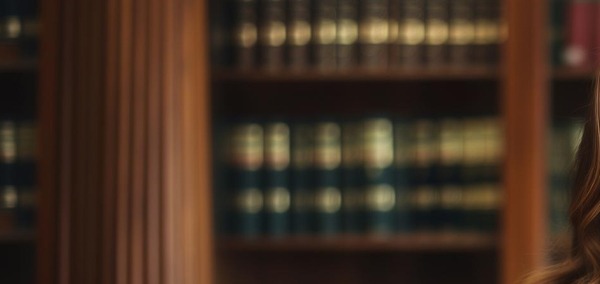Being in a rear-end collision is a jarring experience. You might be shaken up, unsure of what happened, and worried about injuries or damage to your car. It’s natural to feel confused and overwhelmed.
Understanding who’s at fault is the first step toward protecting your rights, getting the compensation you deserve, and finding answers that help you move forward. Jack Bernstein Injury Lawyers can provide clarity and support during this difficult time.
| Key Takeaway | Explanation |
|---|---|
| Rear drivers are often presumed at fault in rear-end collisions. | This is due to their duty of care to maintain a safe following distance and avoid hitting the car in front. |
| There are exceptions to the presumption of fault. | Lead driver actions (sudden lane changes, brake-checking), road hazards, or mechanical failures can shift liability. |
| Evidence is crucial for proving your case. | Gather police reports, photos/videos, witness statements, and seek medical attention immediately. |
| Insurance companies aim to minimize their payouts. | Don’t admit fault or accept a settlement without consulting an attorney. |
| Comparative negligence may apply. | Even with partial fault, you could still be entitled to compensation. An attorney helps assess the impact on your case. |
| Complex scenarios demand legal expertise. | Attorneys understand traffic laws, can employ accident reconstruction specialists, and fight to protect your rights. |
The Rear-End Collision Fault Presumption
In most rear-end collisions, the law presumes the rear driver to be at fault. Let’s break down why:
- Safe Following Distance: Drivers have a responsibility to leave enough space between their car and the one ahead to stop safely if the front vehicle brakes suddenly. Failing to do so often indicates negligence.
- Duty of Care: All drivers have a “duty of care” to operate their vehicles responsibly and avoid causing harm to others on the road. Rear-ending someone usually means the rear driver breached this duty.
A Note about Police Reports: Police reports are valuable evidence in car accidents. However, they’re based on the officer’s assessment at the scene. If factors like a sudden medical emergency or unexpected road hazard caused the accident, the report may not fully reflect this. That’s where an experienced attorney can help uncover the complete picture.
When the Rear Driver Might NOT Be Fully at Fault
While the rear driver is often presumed at fault, there are exceptions. Here are some scenarios where the lead driver’s actions or other factors could shift the blame:
Actions of the Lead Driver
- Sudden, Illegal Lane Changes: If the front car swerves erratically without signaling, leaving the rear driver no time to react.
- Brake-Checking: Intentionally slamming on brakes to provoke an accident is dangerous and illegal.
- Faulty Brake Lights or Mechanical Failures: If the lead vehicle’s brake lights malfunctioned, or it experienced a sudden mechanical failure, making it stop unexpectedly.
Other Contributing Factors
- Poor Road Conditions: Slick roads, potholes, or debris can make it difficult to stop in time, even with a safe following distance.
- Unexpected Obstructions: An animal darting into the road or a fallen object can create unavoidable hazards.
IMPORTANT: Proving fault in these situations can be complex. Witness testimony, dashboard camera video, and expert accident reconstruction may be necessary to build your case. That’s why having an experienced attorney on your side makes a significant difference.
Chain Reaction Accidents
Chain reaction accidents involve multiple vehicles colliding one after another. These create uniquely complex scenarios when it comes to determining fault. Here’s why:
- Layers of Liability: Several drivers could share some degree of fault in a chain reaction accident.
- Lead Car’s Actions: If the initial car brakes abruptly and unnecessarily, they could be partially liable, even if they weren’t hit by the car directly behind them.
- Middle Drivers’ Responsibility: Drivers throughout the chain have a duty to maintain a safe following distance, and those who fail to do so could be held accountable.
- Cascading Impacts: Initial collisions can create further collisions down the line, blurring the lines of direct fault.
Understanding fault in chain reaction accidents often requires in-depth investigation and may involve accident reconstruction specialists. Jack Bernstein Injury Lawyers has the experience to handle these complex cases.
Key Evidence for Proving Your Case
In any car accident, the more evidence you have, the stronger your case will be. This is especially true in rear-end collisions, where fault can be contested. Here’s what to gather:
Act Immediately
- Police Report: Call the police to the scene. The police report will document the accident, including the officer’s assessment of the scene and any witness accounts. You’ll need this report to file an insurance claim.
- Photos and Videos: Use your phone to take pictures and videos of the damage to all vehicles, the position of the cars, skid marks, road conditions, and anything else relevant.
- Witness Information: Get names, contact info, and statements (even brief ones) from anyone who saw the accident.
Seek Medical Documentation
- Get Checked Out: See a doctor immediately, even if you don’t feel badly injured. Some injuries, like whiplash, have delayed symptoms. Medical records link your condition directly to the accident.
- Follow Treatment Plans: Adhere to your doctor’s recommendations to show you’re taking your injuries seriously.
Additional Evidence
- Car Camera Footage: If you have a dashcam, the footage could provide invaluable evidence.
- Traffic Camera Recordings: Your attorney can investigate if nearby traffic or business cameras may have captured the accident.
Remember: Insurance companies look for reasons to minimize payouts. Don’t leave your claim to chance. Jack Bernstein Injury Lawyers can help you build a strong case.
What If I’m Partially at Fault?
Even if you were partially at fault for the rear-end collision, you may still be entitled to compensation. Many states, including Nevada, follow the principle of mutual negligence. This means:
- Fault is Divided: The court assigns a percentage of fault to each driver involved.
- Compensation is Reduced: Your award will be reduced by your percentage of fault. So, if you’re found 20% at fault, your compensation will be reduced by 20%.
Why an Attorney is Crucial: Determining fault percentages is complex and often disputed. Insurance companies will try to place as much blame on you as possible. An attorney fights to protect your rights and ensure you’re not unfairly penalized.
Why Insurance Companies Make This Complicated
Insurance companies are businesses focused on protecting their bottom line. Here’s what you need to keep in mind:
- Minimizing Payouts: Adjusters may try to downplay the rear driver’s fault or shift more blame onto you to reduce what they have to pay out.
- Avoid Admitting Fault: Never admit fault at the scene or to the insurance company without first speaking to an attorney. Your words could be used against you.
- The Value of Legal Representation: Experienced attorneys know the tactics used by insurance companies and how to counter them. They work to ensure you get the maximum compensation you’re entitled to.
Protecting Your Rights: Why an Attorney Matters
Rear-end collisions can lead to complex legal battles, especially when fault is disputed or multiple vehicles are involved. An experienced attorney helps you:
- Understand Complex Fault Scenarios: Lawyers have extensive knowledge of traffic laws and relevant legal precedents to establish who’s truly liable.
- Build a Strong Case: They may engage expert accident reconstruction specialists to analyze the scene and strengthen your claim.
- Manage Your Claim for the Best Outcome: Attorneys handle all dealings with insurance companies, shielding you from aggressive tactics and unfair settlements.
- Protect You From Unfair Blame: They fight to minimize any fault incorrectly attributed to you.
- Assess the True Value of Your Losses: Attorneys work with experts to ensure the full impact of your injuries (medical, financial, and personal) is considered for maximum compensation.
Next Steps
In rear-end collisions, the rear driver is often presumed at fault. However, there are exceptions – from the lead driver’s actions to road hazards and chain reactions. Determining fault accurately is critical to protect your right to fair compensation.
If you’ve been injured in a rear-end accident, don’t navigate this alone. Jack Bernstein Injury Lawyers offers the experience and dedication needed to secure the best possible outcome for your case. Contact us today for a free consultation.
Contact Us for a Free Consultation
If you have been injured in a car accident, contact Jack Bernstein Injury Lawyers for a free, no obligation consultation with experienced Las Vegas car accident lawyers. You will gain an advocate for every stage in the claims process until you have the compensation you deserve.
Jack Bernstein Injury Lawyers is available to help you handle your injury claim in the Las Vegas metropolitan area and beyond. Jack Bernstein and his team can offer you the personalized service and legal representation you deserve after an accident.
Call us at (702) 633-3333 or contact us today for a free consultation to discuss your case.

